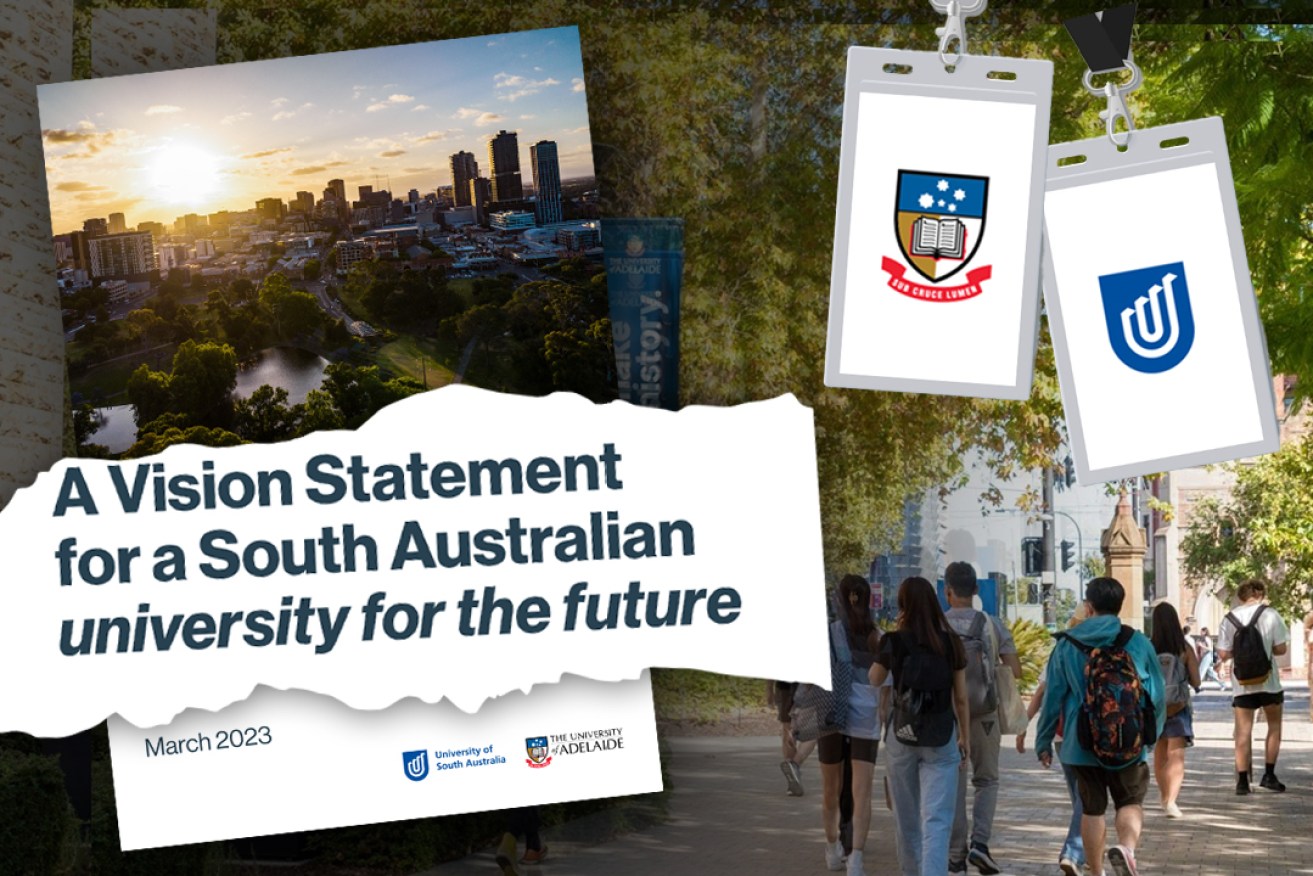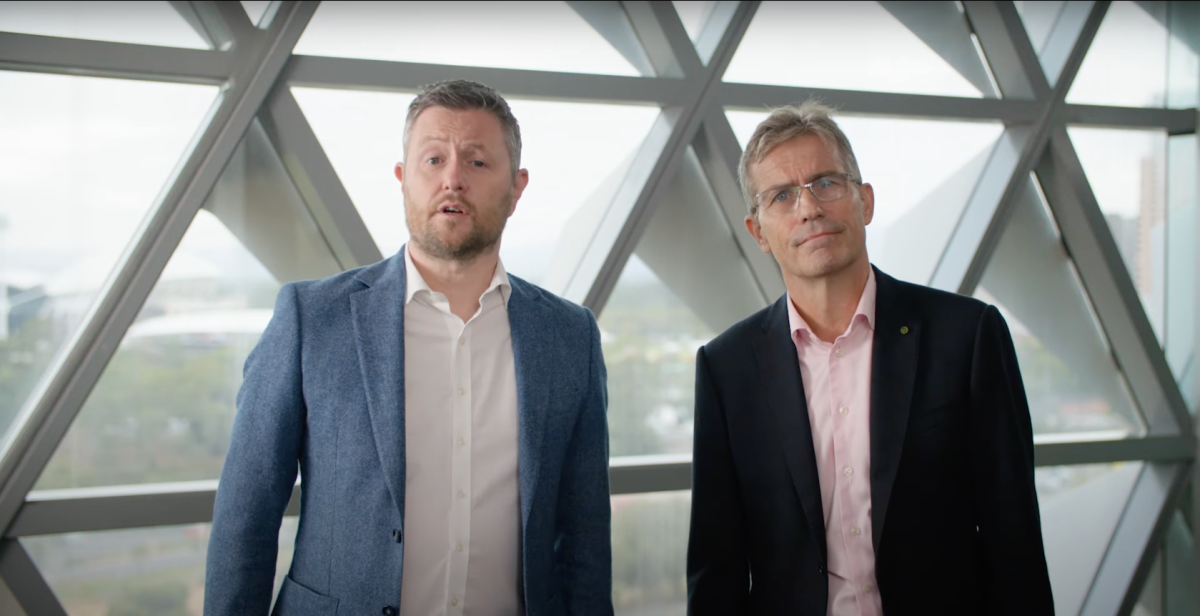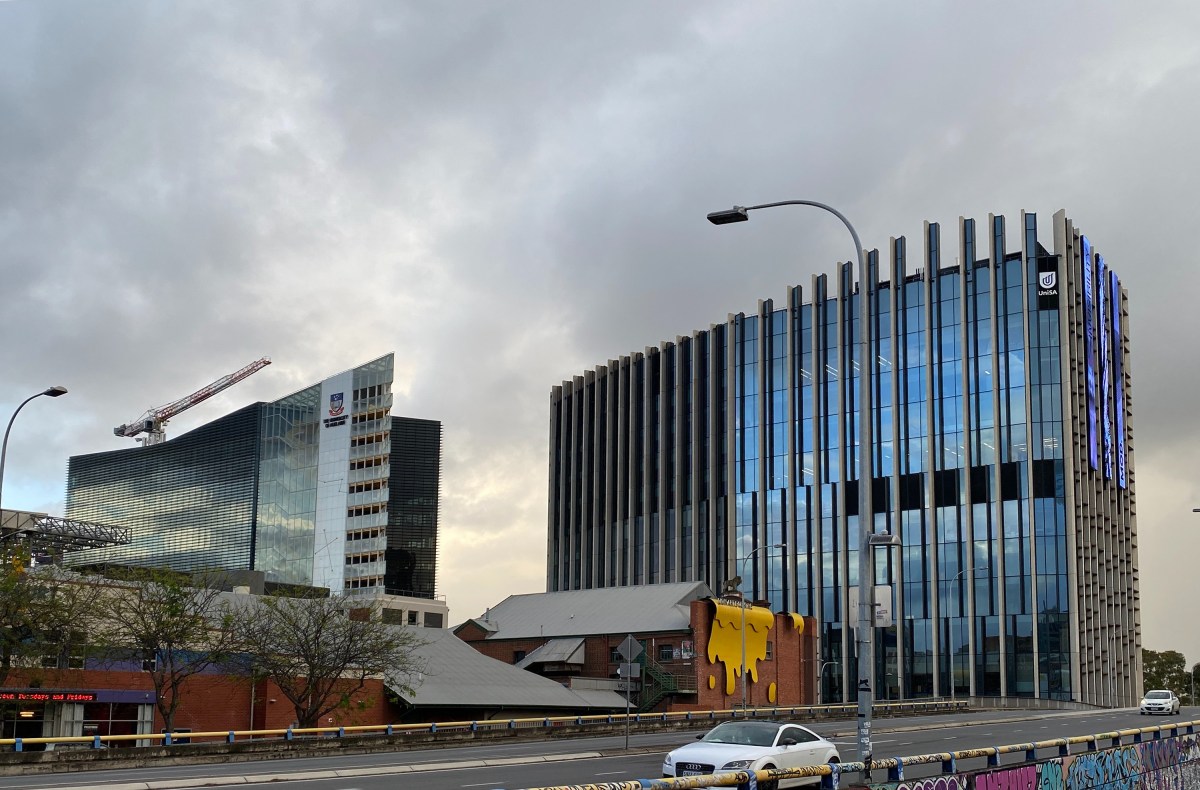‘The government has them in a headlock’: Uni merger decision imminent
Critics of a Malinauskas Government-backed merger between the universities of Adelaide and South Australia have called for evidence of the benefits should it proceed, after both vice-chancellors told staff to expect an announcement on the controversial plan “outside of standard working hours” this weekend.


Image: Tom Aldahn/InDaily
University of Adelaide vice-chancellor Peter Høj and University of South Australia vice-chancellor David Lloyd wrote to staff on Monday about the proposal to merge their two institutions, revealing a final decision will be announced this weekend following a decision from their respective university councils.
The Malinauskas Government made an election promise to pursue a university merger and the Premier has been bullish in backing the policy, telling reporters earlier this year he would “make” the merger happen.
The two universities reached an agreement in December outlining a governance structure and January 2026 start date for a merged university.
They revealed at the time the proposed entity would be called “Adelaide University”, subject to a business case, feasibility assessment and relevant approvals.
But staff consultation revealed resistance to the move, with the National Tertiary Education Union earlier this month releasing a survey of 1100 staff across South Australia’s three public universities revealing only 25 per cent supported the proposed merger.
That survey also showed 95 per cent of staff did not feel “appropriately consulted” by the state government on the proposal.
The universities’ consultation with staff, students and graduates on the merger generated fewer responses (800) than the union’s survey.
The universities’ summary of consultation said this “cannot be relied on to establish a statistically representative overall view” as it represented just 0.3 per cent of the number of people who were invited to respond.
In his all-staff email on Monday, Høj insisted that “at this stage, no decision to create a combined university has been made” – although he flagged a series of staff “town hall” meetings in July to discuss the decision.
“The feasibility assessment phase is nearing conclusion, and we will present the business case and detailed advice to our Council at the end of this month for their review and consideration,” Høj wrote.
“If the proposed university for the future moves to the next stage, we will further develop and implement detailed transition and implementation planning to enable the combined university to begin operations in January 2026.
“This next phase will require expert input from our broader staff and student community, but we will also need to source additional external capacity to make the task doable.”
UniSA vice-chancellor David Lloyd also wrote to staff on Monday, saying: “Please be assured that communicating the outcomes of the Council deliberations to our staff and students is the highest priority in this next immediate phase.”
“Regrettably, given the timing of the Councils’ deliberations, I want to foreshadow that future updates regarding the outcome will likely be delivered outside of normal working hours this coming weekend, and given the level of associated interest, may well be in the wider public domain shortly after.”

UniSA vice chancellor David Lloyd and University of Adelaide vice chancellor Peter Høj in a joint video presentation about the merger last December. Photo: University of Adelaide/Facebook
UniSA will also hold staff meetings next month to discuss the decision.
Premier Peter Malinauskas said in March that if the universities did not support amalgamation, the state government “reserved the right” to re-establish a university merger commission to “pursue a university amalgamation to make it happen”.
Deputy Premier Susan Close, who holds the higher education ministerial portfolio, confirmed today that the merger commission was still on the table if needed.
“If, following consideration of the feasibility and business case by the universities, the establishment of a Merger Commission is still required, the Government will deliver on our commitment,” she said in a statement
NTEU SA division secretary Andrew Miller said the threat of a commission put the two university councils under pressure to approve a merger “so they can keep control” of the process.
“I think that everyone’s expecting ‘yes’ now,” Miller told InDaily.
“No one can see them saying ‘no’ otherwise the government will compel them to a commission of inquiry, then the two university councils lose carriage of this project.”
Miller said the universities voting no and triggering an inquiry may be a preferable outcome “because at least then there’d be robust analysis of the undertaking itself”.
“But I can’t see them saying it’s not feasible and losing the carriage that council currently has over the project – I think they’ll want to guard that,” he said.
Miller also questioned the purpose of the business case and feasibility assessments for the merger.
“In a way, it might be an exploration about how to make it feasible, how to make it work, given that the government has them in a headlock,” he said.
“The Premier has said that he is going to make this happen come what may, and that if the universities don’t get the job done then he’ll take them to a commission of inquiry and he’ll get the job done.
“So, in a way, this sort of stacks the game… it doesn’t make it a legitimate inquiry to my mind.
“I’m not hearing anyone thinking this is going to go down from both councils – mood on the ground is that they’ll say it’s feasible and then we’ll move on to the next part of a new consultation now about what that new university looks like.”
It’s unclear how much of the business case, feasibility assessments and financial plan will be released by the universities over the weekend given the documents include commercial information.

Merging the University of Adelaide and University of South Australia would immediately create one of Australia’s largest universities by student numbers. Photo: Tony Lewis/InDaily
University of Adelaide NTEU branch president Virginie Mason, from the School of Economics and Public Policy, said: “The question of merger feasibility is a moot point. Anything is feasible when ignoring costs and desirability.
“What should be asked is whether the State or Federal government can afford a merger given their current growing budget deficits.
“And for those proponents of the merger, where is the economic modelling supporting those purported benefits?”
The Malinauskas Government has offered an unspecified financial contribution to the two universities if they choose to pursue a merger. No details were provided in this month’s State Budget.
Public Universities Australia (PUA), an alliance of staff and student unions as well as individual academics and researchers, has also come out against the merger.
The group, which has more than a dozen academic staff supporters within UniSA and the University of Adelaide, has raised concerns the union will create “administrative chaos” that will discourage students.
“A merger of this size takes 10 years to settle,” the PUA wrote in a position paper this week.
“The staff exodus that has already begun, the erosion of culture, the massive initial drop in rankings, and the initial administrative chaos will all be disincentives to study in SA.
“To then gradually climb out of that hole would take years on ‘life support’ at the taxpayers’ expense.
“If those extra international students are out there, surely it is much more attractive to come to the universities as they are now in a stable state and with established diverse offerings?”
Geoff Hanmer, an Adjunct Professor of Architecture at the University of Adelaide and a prominent critic of the merger, said bigger universities were also less attractive to students.
“A merger will be very expensive, costing at least $250m, and it will not achieve the hoped for objectives,” he said.
“In particular, bigger universities are less attractive to students than smaller ones, so the dream of growing the university by attracting interstate (or more international students) is illusory.”
InDaily asked the University of Adelaide and UniSA whether they feel compelled to enter into a merger given the threat of a commission, whether the staff town halls will go ahead if the merger doesn’t, and why the merger decision is being announced on the weekend.
In a joint statement, Lloyd and Høj said: “The University of Adelaide and UniSA Councils are autonomously and independently working through a comprehensive business case this week, to understand the feasibility of combining the institutions to create a new university.
“The feasibility assessment involved extensive work across 14 workstreams relating to curriculum, research, legal and regulatory matters, systems, people and culture, just to name a few.
“We are committed to communicating with staff and students as soon as possible following the outcome of the Councils’ deliberation. No decision has been made at this point.”
The Malinauskas Government will have to pass legislation through parliament to establish the newly merged “Adelaide University” if it is approved.
It is likely to face a difficult path through the Upper House where the Greens are already opposed to a merger while SA-Best and the Liberal Party have already flagged significant concerns.
“If the universities decide to create a new university, the Malinauskas Government is committed to preparing legislation for that institution and will consult widely as part of this process,” Deputy Premier Close said.




